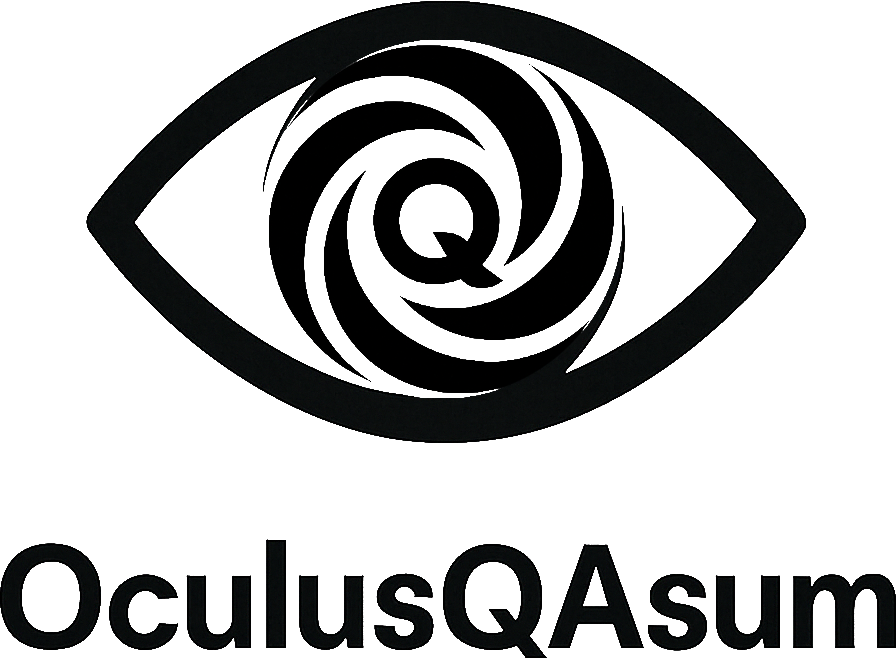/ˈɑːkjʊləs ˌkjuː.eɪˈsuːm/ "ä′k-yo͞o-ləs kyo͞o-ā′-so͞om" (AHK-yoo-luhs cue-AY-soom)
Oculus Quod Assumit.
The eye that takes what it takes.
motto “Nihil assume. Omnia observa. Quidvis resolve.” Assume nothing. Observe everything. Resolve anything.
OculusQAsum is a powerful visual QA system that bridges the gap between design and development, ensuring pixel-perfect implementation of web interfaces. It automatically detects visual inconsistencies, generates tickets, fixes bugs, and monitors for regressions - all with a blend of technical precision and intelligent automation.
What sets it apart from tools that inspired it (Percy, Chromatic, etc) is that OculusQAsum goes further, opening and resolving issues using your ticket tracker and submitting PRs with tested fixes for the issues it detects.
- Visual Inconsistency Detection: Pixel-perfect comparison between design mockups and developed UI
- Auto-Generated GitHub Issues: Creates detailed tickets with visual evidence and priority labels
- LLM-Powered Bug Fixing: Uses AI to analyze discrepancies and generate code fixes
- Automated Pull Requests: Creates PRs with suggested fixes for quick resolution
- Continuous Monitoring: Prevents visual regressions through scheduled checks
- Multi-Viewport Testing: Verifies consistency across desktop, tablet, and mobile views
- Real-time Alerts: Integrates with Slack, Teams, and email for instant notifications
# Install globally
npm install -g oculus-qasum
# Initialize in your project
npx oculus-qasum init
# Compare design with implementation
npx oculus-qasum compare --design path/to/design.png --implementation https://yourapp.com
# Start monitoring to prevent regressions
npx oculus-qasum monitor --create-baselinesOculusQAsum works through four main components:
- Comparison Engine: Captures and compares screenshots with advanced image analysis
- Issue Tracker: Manages the entire bug lifecycle from detection to resolution
- Fix Generator: Uses AI to understand visual discrepancies and generate code fixes
- Live Monitor: Continuously watches for regressions in your production environment
graph TD
A[Design System] --> C[1\. Comparison Engine]
B[Implementation] --> C
C --> D[Discrepancy Analysis]
D --> E[2\. Issue Tracker]
D --> F[3\. Fix Generator]
G[Production UI] --> H[4\. Live Monitor]
H --> D
E --> I[GitHub Issues]
F --> J[Automated PRs]
H --> K[Regression Alerts]
See our detailed Installation Guide for complete setup instructions.
# Clone the repository
git clone https://github.com/scottvr/oculus-qasum.git
cd oculus-qasum
# Install dependencies
npm install
# Setup configuration
cp .env.example .env
# Edit .env with your API keys
# Run the CLI
./cli.js initOculusQAsum is highly configurable through a YAML configuration file:
comparison:
thresholds:
pixelDifference: 0.05
browser:
headless: true
llm:
enabled: true
model: "gpt-4-vision-preview"
github:
owner: "your-username"
repo: "your-repo"
issueLabels: ["visual-regression", "automated"]
# Additional configuration options...See Configuration Reference for all available options.
OculusQAsum provides an intuitive command-line interface:
Commands:
init Initialize OculusQAsum in the current directory
compare [options] Compare design mockup with implementation
monitor [options] Start continuous monitoring for visual regressions
Options:
-v, --version Display version information
-h, --help Display help information
See CLI Reference for detailed command documentation.
OculusQAsum can be used programmatically in your Node.js applications:
const { OculusQAsum } = require('oculus-qasum');
// Initialize with configuration
const oqa = new OculusQAsum({
comparison: {
thresholds: { pixelDifference: 0.05 }
}
});
// Run automated visual QA workflow
async function runVisualQA() {
const results = await oqa.runWorkflow(
'https://figma.com/file/abc123',
'https://myapp.com/component',
'.hero-section',
sourceCode,
{ componentName: 'Hero Section' }
);
console.log(results);
}See API Reference for complete documentation.
OculusQAsum integrates with popular design, development, and communication tools:
- Design Tools: Figma, Sketch, Adobe XD
- Issue Trackers: GitHub, Jira, Linear
- Version Control: GitHub, GitLab
- Communication: Slack, Microsoft Teams, Email
- CI/CD: GitHub Actions, CircleCI, Jenkins
 |
 |
| Visual Difference Detection | Auto-Generated GitHub Issue |
PRs and Issues are welcome.
This project is licensed under the MIT License - see the LICENSE file for details.
- Built with Playwright
- Visual comparison powered by pixelmatch and ResembleJS
- LLM capabilities by OpenAI and Anthropic
- Inspired by tools like Percy, Chromatic, and BackstopJS
Observatio
Cognitio
Universalis
Logica
Ultima
Systema
Questionis
Assumptionisque
Summa
